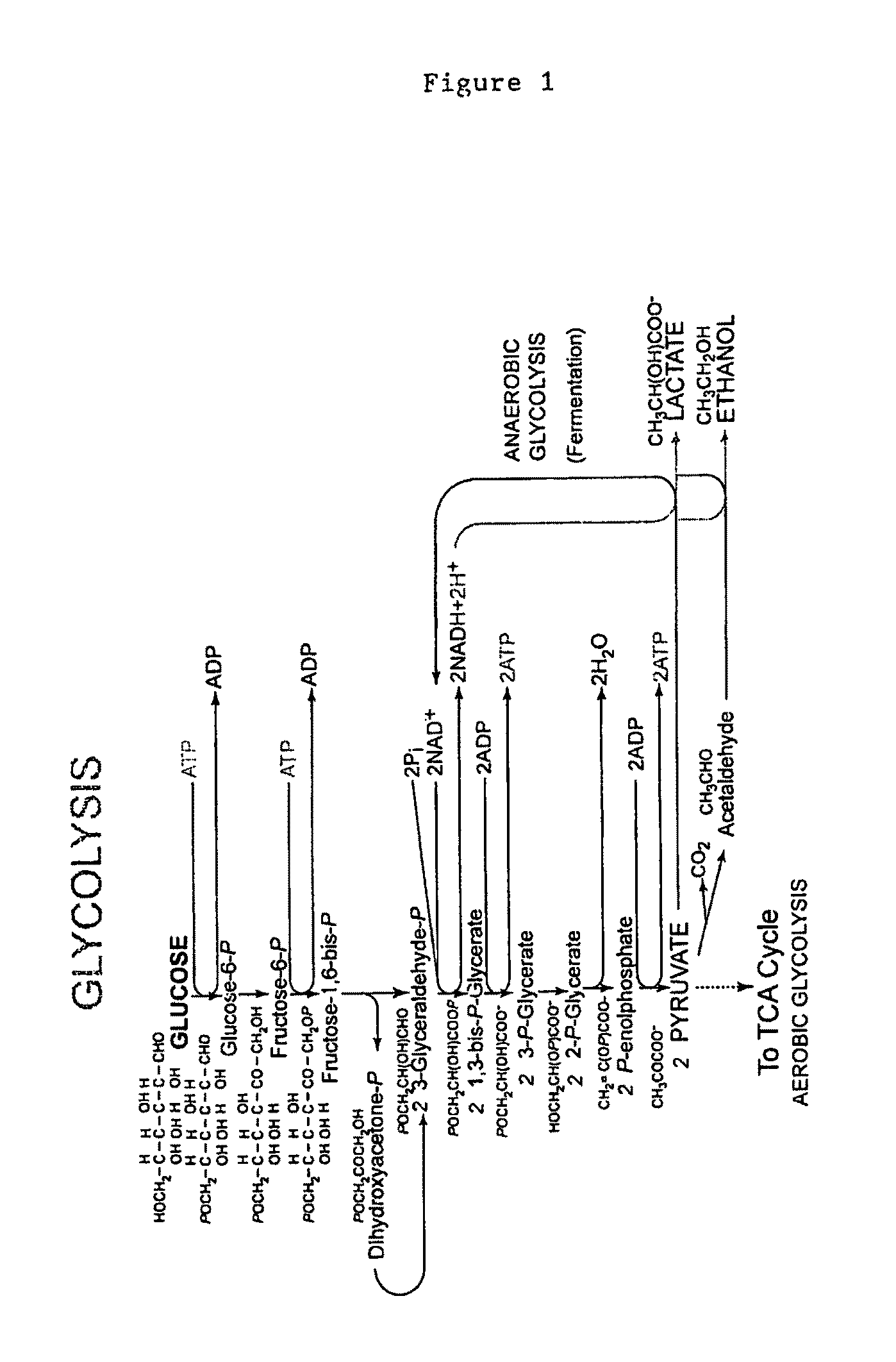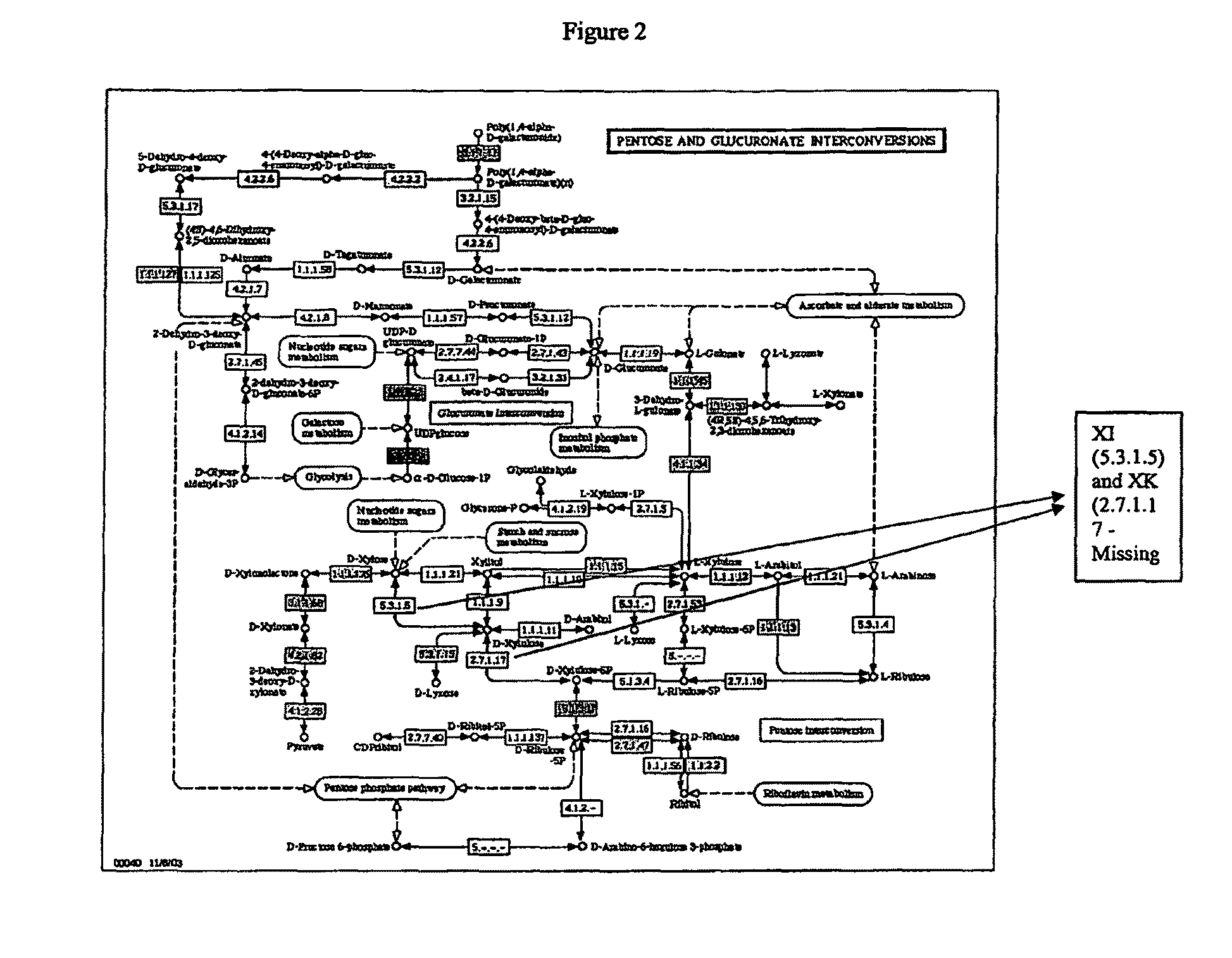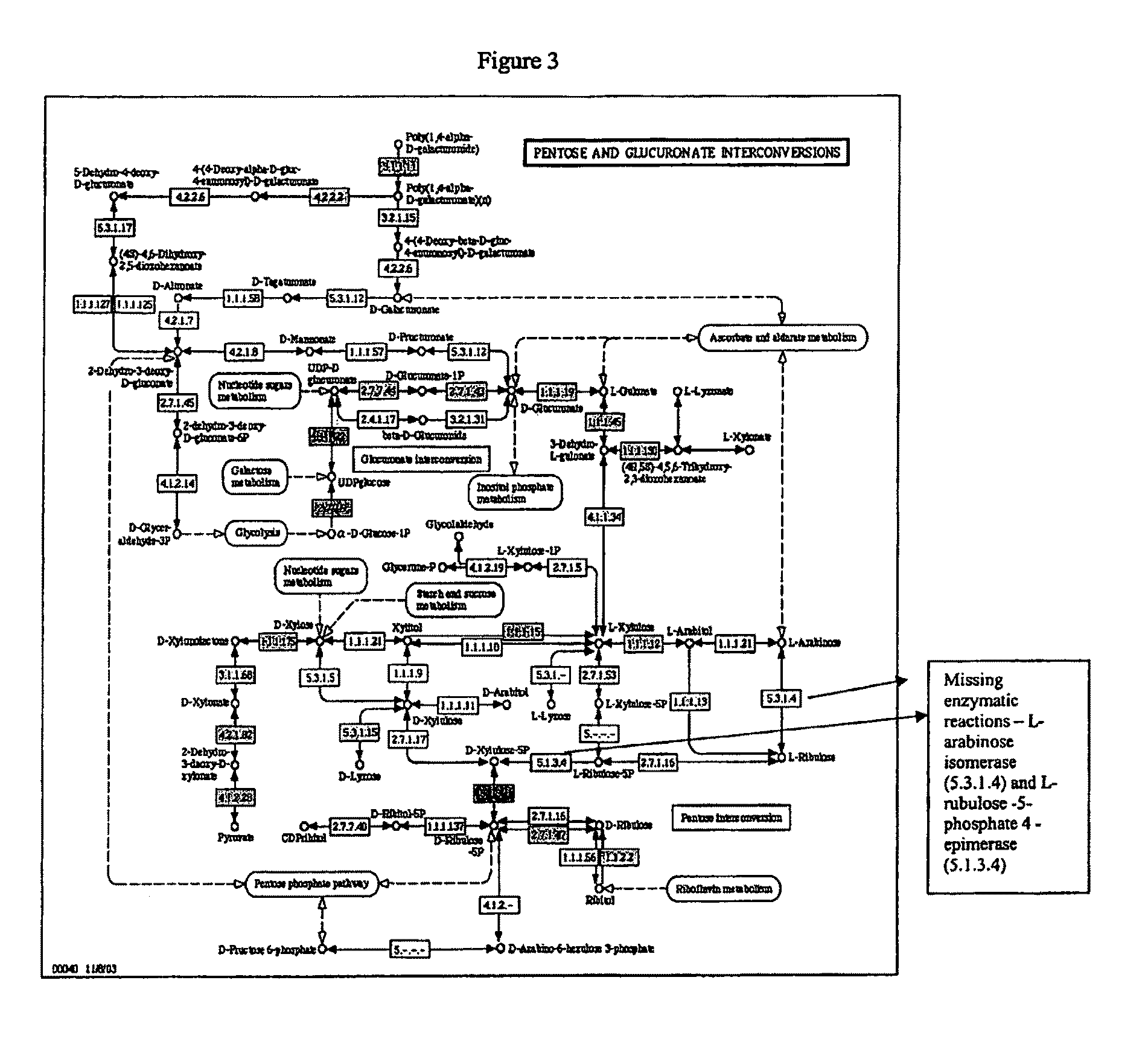Gene knockout mesophilic and thermophilic organisms, and methods of use thereof
a technology of which is applied in the field of gene knockout mesophilic and thermophilic organisms, and methods of use thereof, can solve the problems of high yield of ethanol, lack of low-cost technology for overcoming the recalcitrance of these materials, and hydrolysis that has historically proven to be problematic, so as to increase the native ability
- Summary
- Abstract
- Description
- Claims
- Application Information
AI Technical Summary
Benefits of technology
Problems solved by technology
Method used
Image
Examples
example 1
Generation of Custom Transposons For Mesophilic And Thermophilic Cellulolytic, Xylanolytic Organisms
[0175]The present invention provides methods for generating custom transposons for cellulolytic and / or xylanolytic and / or thermophilic organisms. To do this, a native promoter from the host organism will be fused to a selectable marker which has been determined to work in this organism. This fragment will be cloned into the EZ-Tn5™ transposon that is carried on the vector pMOD™-2 (Epicenter® Biotechnologies). For example, the C. thermocellum the gapDH promoter will be fused to the mLs drug marker, as well as the cat gene and then subcloned into vector pMOD™-2.
[0176]Commercial transposons are lacking in thermostable drug markers and native promoters of cellulolytic and / or xylanolytic and / or thermophilic organisms. The mLs and cat markers have functioned in thermophilic bacteria and the gapDH promoter regulates a key glycolytic enzyme and should be constantly expressed. The combination ...
example 2
Constructs For Engineering Cellulolytic And Xylanolytic Strains
[0179]The present invention provides compositions and methods for genetically engineering an organism of interest to CBP by mutating genes encoding key enzymes of metabolic pathways which divert carbon flow away from ethanol. Single crossover knockout constructs are designed so as to insert large fragments of foreign DNA into the gene of interest to partially, substantially, or completely delete, silence, inactivate, or down-regulate it. Double crossover knockout constructs are designed so as to partially, substantially, or completely delete, silence, inactivate, or down-regulate the gene of interest from the chromosome or replace the gene of interest on the chromosome with a mutated copy of the gene, such as a form of the gene interrupted by an antibiotic resistance cassette.
[0180]The design of single crossover knockout vectors requires the cloning of an internal fragment of the gene of interest into a plasmid based sys...
example 3
Transformation of C. cellulolyticum
[0209]Cells were grown in 50 mL of GS media with 4 g / l cellobiose to an OD of 0.8 in anaerobic conditions, incubated at 34 degrees C. After harvesting they were washed 3 times in equal volumes with a wash buffer containing 500 mM sucrose and 5 mM MOPS with pH adjusted to 7. After the final wash, the cell pellet was resuspended in an equal volume of wash buffer 10 μl aliquots of the cell suspension were placed in a standard electroporation cuvette with a 1 mm electrode spacing. 1 ul plasmid DNA was added. The concentration of the plasmid DNA was adjusted to ensure between a 1:1 and 10:1 molar ratio of plasmid to cells. A 5 ms pulse was applied with a field strength of 7 kV / cm (measured) across the sample. A custom pulse generator was used. The sample was immediately diluted 1000:1 with the same media used in the initial culturing and allowed to recover until growth resumed, and was determined via an increase in the OD (24-48 h). The recovered sampl...
PUM
| Property | Measurement | Unit |
|---|---|---|
| temperature | aaaaa | aaaaa |
| temperature | aaaaa | aaaaa |
| volume | aaaaa | aaaaa |
Abstract
Description
Claims
Application Information
 Login to View More
Login to View More - R&D
- Intellectual Property
- Life Sciences
- Materials
- Tech Scout
- Unparalleled Data Quality
- Higher Quality Content
- 60% Fewer Hallucinations
Browse by: Latest US Patents, China's latest patents, Technical Efficacy Thesaurus, Application Domain, Technology Topic, Popular Technical Reports.
© 2025 PatSnap. All rights reserved.Legal|Privacy policy|Modern Slavery Act Transparency Statement|Sitemap|About US| Contact US: help@patsnap.com



